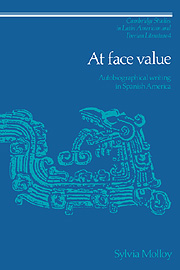Summary
Prosopopeia, it has been suggested, is the trope informing autobiography. Self-writing would be that attempt, ever renewed and ever failing, to give voice to that which does not speak, to bring what is dead to life by endowing it with a (textual) mask. The writing of an introduction, I would venture, is a more modest though no less demanding form of the same trope. Inasmuch as it is finished, one's text needs to be given a face, needs to be made to speak, with one's voice, one last time. An introduction is precisely that occasion, marking the last time that one speaks for the text, and also, disquietingly, the first time that one begins to sense how distant that text has become. Like autobiographies, introductions too begin at the end.
But that is as far as I shall pursue the parallel. I am not tempted, as more than one critic when writing on the subject, to suggest that writing about autobiography is in itself a form of autobiography, nor to posit that the organization of this book mirrors a personal itinerary. If I choose to write about autobiography, and more concretely, about Spanish American autobiography, the choice is due to sheer critical inquisitiveness.
- Type
- Chapter
- Information
- At Face ValueAutobiographical Writing in Spanish America, pp. 1 - 12Publisher: Cambridge University PressPrint publication year: 1991

